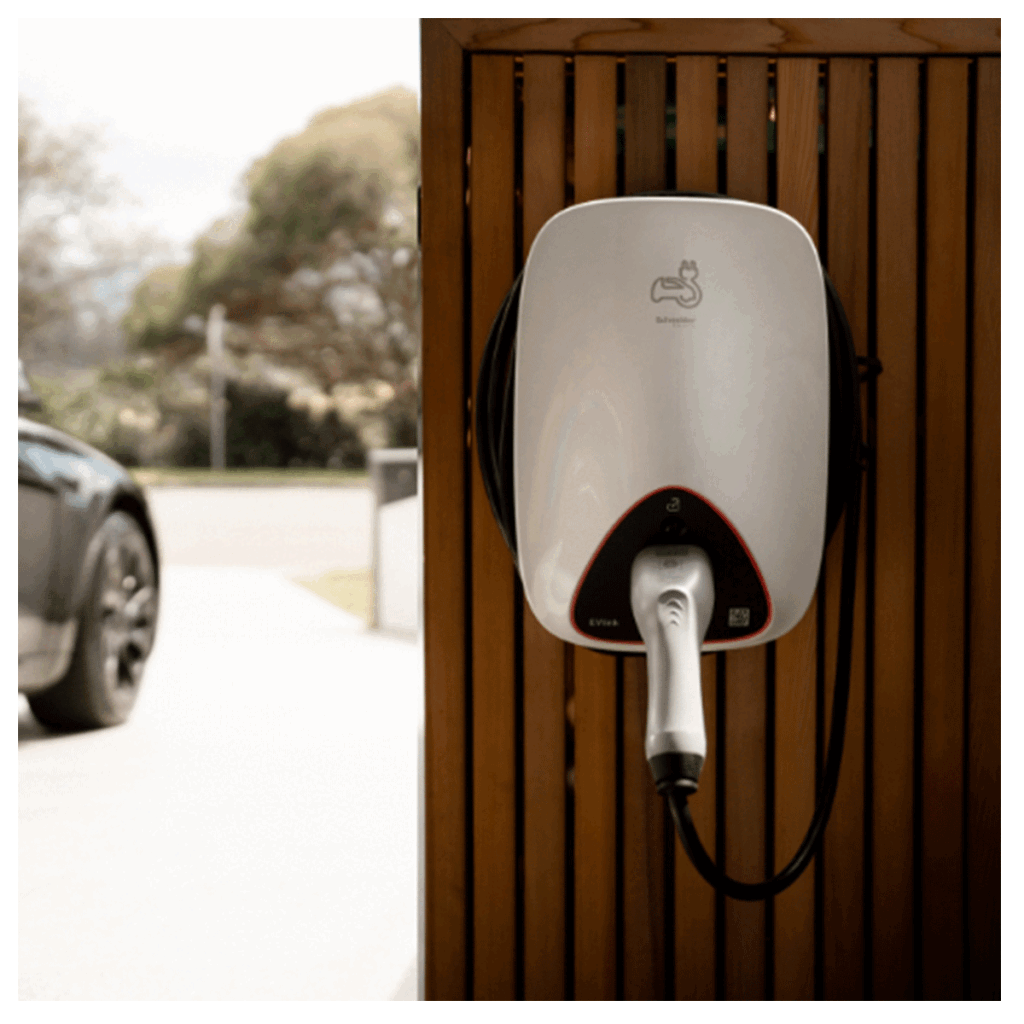
As new electric vehicle technology improves, range increasing and prices dropping with the help of Government rebates, New Zealanders are embracing electric vehicles. In the three months to January 2023, EVs made up 14.28 percent of light vehicle registrations, and the number keeps climbing. To support New Zealand electricians who want to add value to their customers and their business by being able to offer customers a safer and typically faster way of charging their vehicle than a standard 3-pin plug, Schneider Electric has launched a new, easy-to-use and cost-effective EVlink Home charger.
EVlink Home is simple and easy-to-install charger with an in-built RDC-DD, which helps to optimise switchboard space in retrofit or new builds. The sharp and modern design of EVlink Home will appeal to homeowners looking for a sleek option to go inside or outside the home with its IP54 rating.
Complementing the EVlink Home charger is the optional EVlink Home Anti-tripping system, a power load management system which adapts continuously the power delivered by the charger to the EV according to power available at home. The power availability is calculated by the Home Anti-tripping system by comparing the utility power limit and the home consumption gathered by a current transformer positioned on the bottom of the main circuit breaker. The communication between the Home Anti-tripping system and EVlink Home charger is done with power line communication, so there is no need to add a communication cable.
Key features include:
• In-built RDC-DD
• 1Phase: 7.4kW | 3Phase: 11kW options
• Wall mounted
• Attached cable 5m or Type 2 socket
• Compatible with home anti-tripping system (Peak Controller)
• CTs are included with Peak Controllers
• Certification IEC 61851-1 Ed. 3.0
• RCM GMA-513376
• When installing, entry to charger takes circular TPS.
Schneider Electric New Zealand is the market leader in EV services, and points to a 2021 survey of EV owners as indicative of the need and demand for home-based EV technology. The Energy Efficiency and Conservation Authority (EECA) survey of 932 EV owners found that although 82 percent of people commonly charge at home, most lack the right hardware for optimal safety and performance.
More than three-quarters (77 percent) are using a standard 3-pin domestic power socket and charging cable (known as Mode 2) to charge at home, while only 30 percent have dedicated wall-mounted EV home chargers (Mode 3, the ideal for function and safety; some respondents have access to both). Among those with 2018 or earlier EVs, an even higher number – 84 percent – are using a domestic Mode 2 socket and cable, and 70 percent of respondents had cars in that age range.
Schneider Electric’s National E-Mobility Manager Liam Vink says, “There is huge demand for EVs – by 2030, it is estimated 30 percent of passenger vehicles globally will be fully electric, and this could be even higher in New Zealand. We also know this is a reasonably new area of expertise for many electrical businesses, which is why we have an excellent support network across the country in our sales, technical support team and on-demand online training opportunities in place. This version of the charger is not a ‘smart’ model – so it is ideal for homeowners who just want to plug in, charge and go.”
Mr Vink says, “Sustainability and the circular economy are our focus, and we want to give everyone the opportunity to live more sustainably and contribute to tackling the climate crisis in ways they can afford and which complement and enhance their lifestyle.”
Electricians who want to upskill in EV charging can reach out to their Schneider representative to access free digital on-demand training on the EV charging market and the new solution.
Fact Sheet
• As technology advances the average EV range is expanding – rising from 300 kilometres in 2020 to between 500 and 600 kilometres by 2030. This will further reduce the need to stop and charge in transit and make charging at home the norm.
• By late 2022 there were more than 62,700 light EVs in the New Zealand vehicle fleet.
• In the three months ending January 2023, EVs made up 14.28 percent of light vehicle registrations, and petrol vehicles 42.3 percent.
• The goal of the New Zealand Government is to have 35 percent of new vehicle registrations as EVs by 2035.
• In August 2022 23 percent of car sales were EVs, and cumulated in 2022 the market share increased to 10.31 percent.
For further information contact:
Jade Alexander Dodd
Alexander PR
+64 21 822 705
ja**@al*********.nz
About Schneider Electric
At Schneider Electric, we believe access to energy and digital is a basic human right. We empower all to make the most of their energy and resources, ensuring Life Is On everywhere, for everyone, at every moment.
We provide energy and automation digital solutions for efficiency and sustainability. We combine world-leading energy technologies, real-time automation, software and services into integrated solutions for Homes, Buildings, Data Centres, Infrastructure and Industries.
We are committed to unleashing the infinite possibilities of an open, global, innovative community that is passionate about our Meaningful Purpose, Inclusive and Empowered values.

